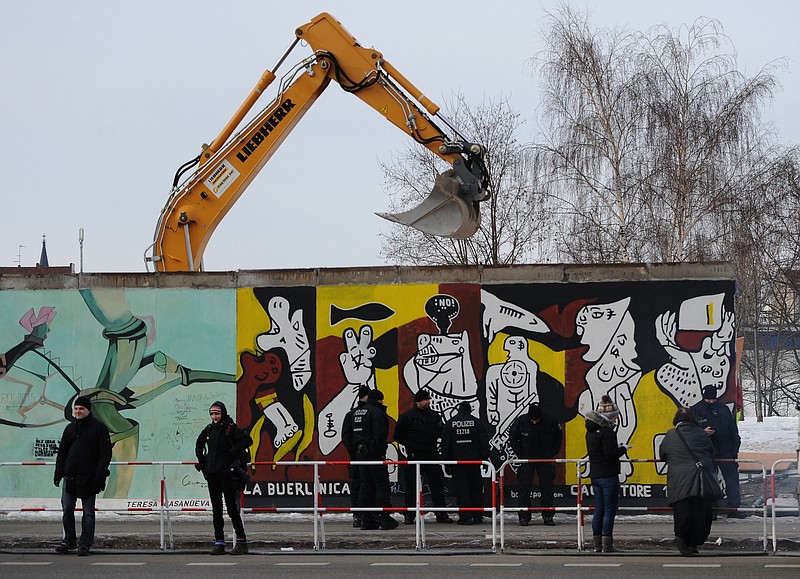BERLIN (AP) - For nearly 30 years, the Berlin Wall was the hated symbol of the division of Europe, a gray, concrete mass that snaked through neighborhoods, separating families and friends. On Wednesday, it took hundreds of police to guarantee the safe removal of 15 feet of what's left of the wall.
Construction crews, protected by about 250 police, hauled down part of the three-quarter of a mile strip of the wall before dawn to provide access to a planned luxury apartment complex overlooking the Spree River.
Even though most of the strip remains intact, the move angered many Berliners, who believe that developers are sacrificing history for profit.
The site, known as the East Side Gallery, has become a major tourist attraction, painted by 120 artists with colorful scenes along the gray concrete tiles.
It is the longest remaining portion of the 96-mile wall that surrounded Western-occupied West Berlin from 1961 until the peaceful revolution against the communist East German government in 1989. At least 136 people were killed trying to escape over the wall.
The flap over the future of the East Side Gallery flared last month with the announcement that developers wanted to tear away part of the wall. The announcement triggered a series of protests, including one attended by American celebrity David Hasselhoff.
Hasselhoff is remembered here fondly for his song "Looking for Freedom" that became the unofficial anthem of the 1989 revolution.
"It's like tearing down an Indian burial ground," Hasselhoff said during the March 17 protest. "It's a no-brainer."
After the protests, demolition work was suspended while local politicians and the investors looked for alternative access to the apartment site, located in the heart of the German capital.
When no other access route could be found, the main investor, Maik Uwe Hinkel, decided to resume the project. Work began at 5 a.m. Wednesday when few people were out on the streets.
In an emailed statement, Hinkel said the removal of parts of the wall was a temporary move to enable trucks to access the building site. He said that after four weeks of fruitless deliberations with city officials and owners of adjacent property, he was no longer willing to wait.
As word of the demolition spread, small crowds of Berliners turned out to watch although no one sought to block the effort.
"I can't believe they came here in the dark in such a sneaky manner," said Kani Alavi, the head of the East Side Gallery's artists' group. "All they see is their money. They have no understanding for the historic relevance and art of this place."
The irony of Berliners trying to preserve part of what was once a hated symbol of repression reflects a growing public belief that the German capital needs to preserve symbols of its past - both the good and the bad - for future generations.
"The Berlin Wall is the most significant symbol of the division of Berlin," said Maria Nooke, the deputy director of the Berlin Wall Foundation. "On the one hand it illustrates the repression in East Germany, on the other hand it symbolizes how Germans peacefully overcame that repression."
It took years for Berliners - both easterners and westerners - to develop such feelings for the wall.
"After a while, there was a growing need to deal with that part of history and to preserve it for future generations," Nooke said.

